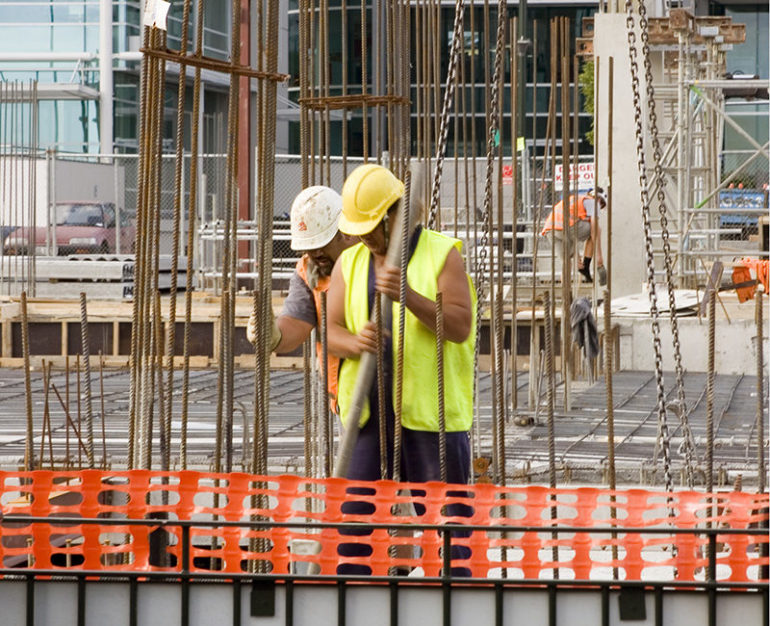Paul Buetow (partner) and James France (solicitor)
in Dentons Kensington Swan’s Major Projects and Construction team.
The NZS 3910:2013 standard is the most widely used construction contract in New Zealand. Its range of use is extremely broad, being employed on small projects all the way to the very largest, in cases of straightforward ‘build-only’, to hybrid delivery methods where the contractor takes on some design responsibilities, and term maintenance models.
But it seems that with time the ‘standard’ moniker has become less fitting for 3910:2013. The length and complexity of the special conditions that are being made have grown significantly – to the extent that there are sometimes more changes of special conditions than there are in the general conditions themselves. In part this is due to the broad range of projects to which the standard is applied by the parties, but there are two other significant drivers for lengthy special conditions, which the industry can address.
The first driver is related to the management of risk. To transfer risk, standard provisions are often amended (sometimes in detail). This has steadily grown over the past 10 years, with the standard risk profile changing as contractors sign on to more and more risky terms to win tenders. There have been frequent calls in the past few years for parties (and principals in particular) to reduce the scale of their special conditions. This is one of the motivations for the review of NZS 3910.
The second driver is the age of NZS 3910:2013. Relatively lengthy special conditions are now required to address changing legislation, in particular modern health and safety legislation, and other market conditions, such as Covid. The last significant revision of 3910 was now almost 35 years ago in 1987. Revisions in 2003 and 2013 aligned the contract with the Construction Contracts Act 2002 and branched 3910 into the 3916 and 3915 variants, respectively. Both were more limited scope reviews.
Review of 3910 has started
The 3910 review has commenced. Scoping objectives have now been set, and what is set to be the most significant overhaul of the standard in the past 35 years is now underway. Standards New Zealand has published a timeline for the review (accessible on its website) which sees a consultation revision of the standard released for public comment in February 2023, and a final publication of the new standard as soon as July 2023. This will be a challenging timeframe given the breadth and depth of review required.
The review committee comprises 25 members, representing 21 distinct organisations, covering principals, contractors, consultants and other key interested parties.
The Civil Contractors’ NZ representatives are Paul Buetow (Civil Contractors’ NZ legal advisor and construction law partner at Dentons Kensington Swan) and Jim Juno (Past President of the Contractors’ Federation and owner of J Juno Construction Limited).
Interim and full revisions
The review is being split into two tranches, with an interim revision being drafted covering:
• Updates made necessary by legislative amendments following 3910:2013 (e.g. the Health and Safety at Work Act 2015);
• The need for a standard COVID-19 (pandemic clause);
• The encouragement of further collaboration (in accordance with Accord principles); and
• Optional clauses for caps on liability.
This ‘interim’ revision is intended to be delivered in August 2022.
Work on the full revision will proceed in parallel. This review will consider essentially all aspects of the current standard. Some of the more contentious topics are likely to include the role of the Engineer to the Contract, limitations on the liability of the parties, and the way the standard provides for the allocation of risk.
In relation to these last two points (limitation of liability and assignment of risk), it is difficult to avoid the fact that usually there will always be some issues on which the principal and contractor have opposing interest, and hence each will want the other to bear the risk. What is hoped is that there will be a clause that fairly attempts to allocate risk to the party that is best able to manage it and that that clause is accepted by the market and not continually amended.
As noted above, public consultation on the full revision is expected to begin in February next year, and the committee will hope to see strong engagement with the industry over that draft. CCNZ will provide updates on the review as it proceeds.
Although there will be limitations on what can be disclosed – to allow for the review to be properly debated, what happens in Vegas will need to stay in Vegas.
However, there will be an opportunity for you to provide feedback on the draft both through working groups being set up internally within CCNZ and through the public consultation process.


Parting words from Jeremy Sole- a final column